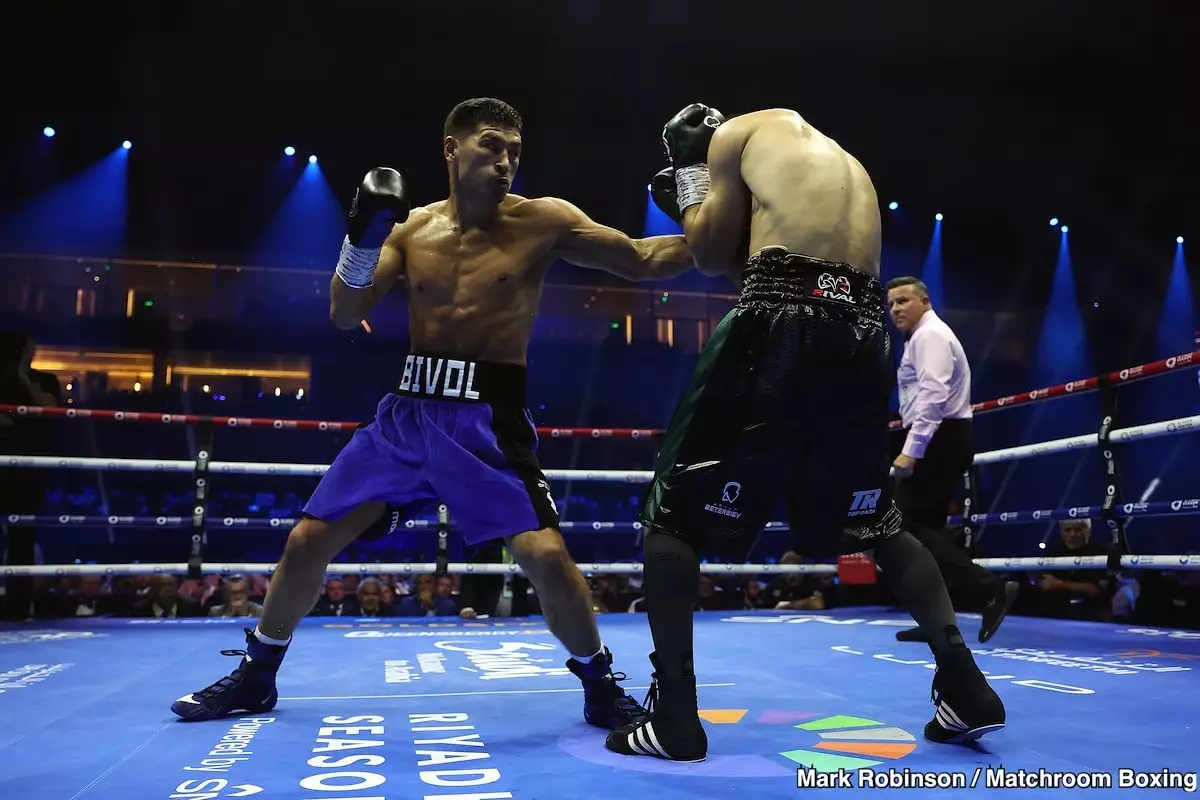Recent images of Terence Crawford seated alongside former WBA light heavyweight champion Dmitry Bivol during IBF Champions Night have ignited speculation regarding the motivations behind this high-profile meeting. Many observers conjecture that Crawford, the undefeated welterweight (41-0, 31 KOs), may be seeking valuable insights from Bivol in preparation for an impending bout with Canelo Alvarez—a matchup that would spotlight two of boxing’s premier talents. However, this appears to be more of a fanciful narrative than a tactical bravado. The fundamental reality is that while Crawford has the speed and technical prowess, his physical attributes—being smaller and not cut from the same cloth as Bivol—set significant limitations on any derived strategic benefits.
Crawford’s design to engage with Bivol might stem from a desire to gather intelligence on how to best Canelo. Nevertheless, the stark differences in their fighting styles raises questions as to the effectiveness of such learning. Bivol, known for his larger frame and powerful punches, employed a strategy that overwhelmed Alvarez, handing him one of his weakest defeats to date. In contrast, Crawford’s agility and positioning in the ring make it difficult to assume that Bivol’s methodology would translate into effective strategies against a fighter of Canelo’s caliber—as they hail from contrasting disciplines within boxing.
Adding further intrigue to the situation is Crawford’s reported interest in avoiding a potential bout with Vergil Ortiz Jr., set to occur on February 22. The timing couldn’t be more strategic, considering Crawford has sustained an injury that will keep him sidelined until May—nearly aligning with Canelo’s anticipated fight. This avoidance may be seen as tactically astute, allowing Crawford to position himself favorably against the more formidable and established Canelo rather than risking an upset against the young and hungry Ortiz. The prospect of a match against Canelo would potentially offer Crawford not just a return to the ring but also a lucrative payday.
However, speculation around Canelo’s asking price of $180 million for a fight with Crawford introduces a significant economic barrier. This figure not only emphasizes Canelo’s reluctance to fight Crawford but also illustrates the complexities inherent in high-stakes boxing negotiations. Crawford might find himself grappling with the ramifications of what such a sum can indicate—the disparity in market demand and fan interest prompts questions about his standing within the sport. The discord between expectations and reality in this scenario could lead to further friction between Crawford, Canelo, and their promoters, most notably Turki Alalshikh.
Lastly, Bivol’s recent struggle against Artur Beterbiev raises additional concerns about his credibility as a reliable source of counsel. After a lackluster performance leading to a majority decision loss, it’s debatable whether Bivol has the standing to advise Crawford effectively. The boxing landscape is littered with fighters whose fortunes rise and fall with each bout, and Bivol’s current form suggests that his insights may at best be limited. As Crawford stands at a career crossroads, the intersection of tactical choices, risk management, and market dynamics will undoubtedly dictate his next moves in an increasingly competitive landscape.

